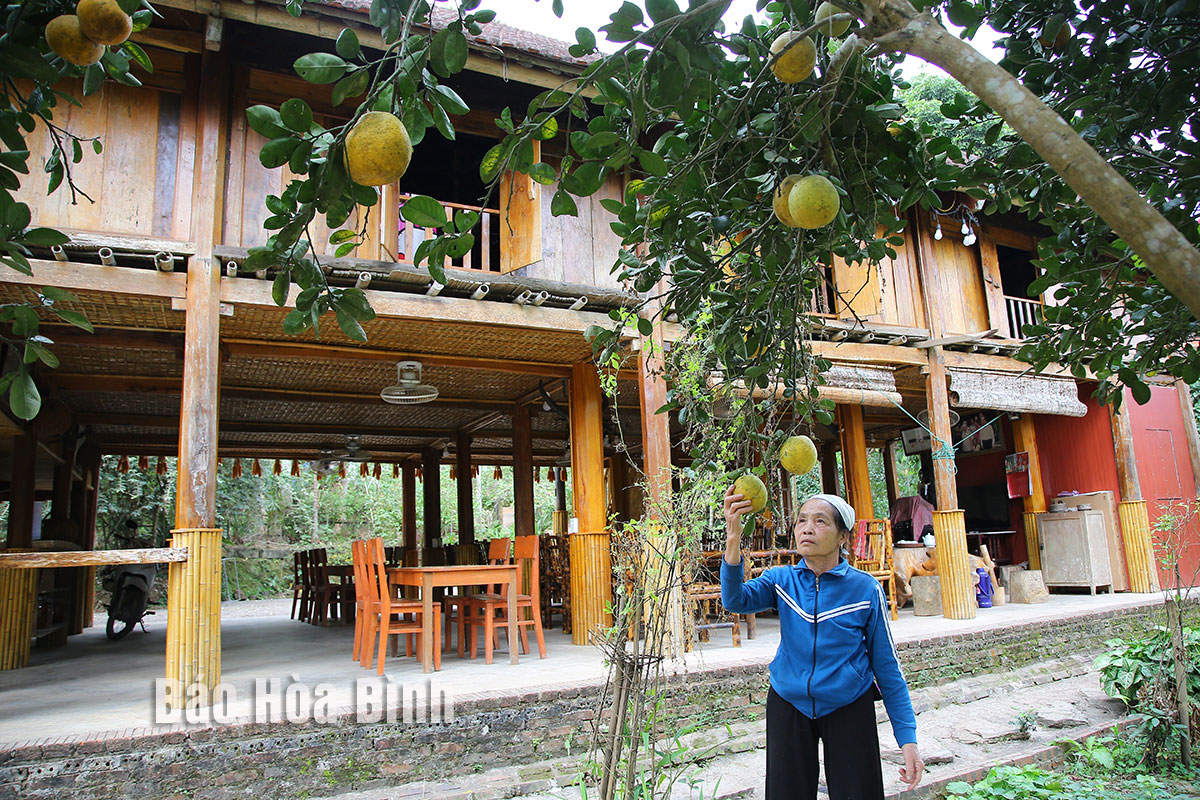



Family of Dinh Cong Lon, who resides in Luy Ai hamlet, Phong Phu commune (Tan Lac district) invests in a homestay to serve tourists.
Luy Ai hamlet is known as an ancient Muong village of the province that still preserves many unique customs, practices, and traditional cultural beauty of the Muong ethnic people. The hamlet has 90 houses, mostly traditional stilt houses of the Muong people. Along with maintaining traditional lifestyle, local residents keep many ancient production tools made from wood or bamboo. For many generations, the locals' economic life has mainly relied on agricultural production. However, their agricultural production is only enough for consumption and doesn’t bring about high economic efficiency.
Bui Van Huynh, Head of Luy Ai hamlet, said that although life is still difficult, people always keep the traditional cultural values of the nation. Most women make their own clothes to wear every day. Every family has 1 - 2 gongs to participate in festivals, cultural and artistic activities.
In January 2014, Luy Ai hamlet was recognised by the provincial People's Committee as a community-based tourism site. It boasts a favourable geographical position, abundant natural resources and typical tourism products which are suitable for developing experiential tourism types such as farming, weeding, rice field ploughing and bamboo shoot collecting.
In addition, the river and stream system is suitable for developing tourism models associated with aquaculture, ecology and camping and experiencing farmers’ activities.
Grasping that advantages, the commune has built a plan and proposed tourism development solutions to promote tourism resources, advantages of the hamlet, becoming a unique and attractive tourism product, contributing to creating more jobs and increasing the locals' income.
Many large tourism delegations, especially foreign ones, have come to the hamlet to visit and participate in community activities. Last year, it welcomed over 80,000 tourists, earning over 8 billion VND (323,440 USD) in revenue.
Since Luy Ai hamlet became a community-based tourism site, the locals' income has been secure, thereby helping to invest in infrastructure and agriculture. Thanks to additional revenue from community-based tourism development, people's lives are becoming prosperous, and the implementation of new-style rural building is promoted. In 2023, two gardens in Muong Lam hamlet were recognised as model gardens by the district People's Committee.
Bui Van Nuc, Chairman of Phong Phu commune People's Committee, said that in the coming time, the commune has set forth specific solutions to develop tourism, associate tourism activities with livelihood development to effectively exploit its potential. Unique local agricultural products will be created along with activities to protect the environment and tourism resources, contributing to the effective implementation of community-based tourism development associated with agriculture in the locality.